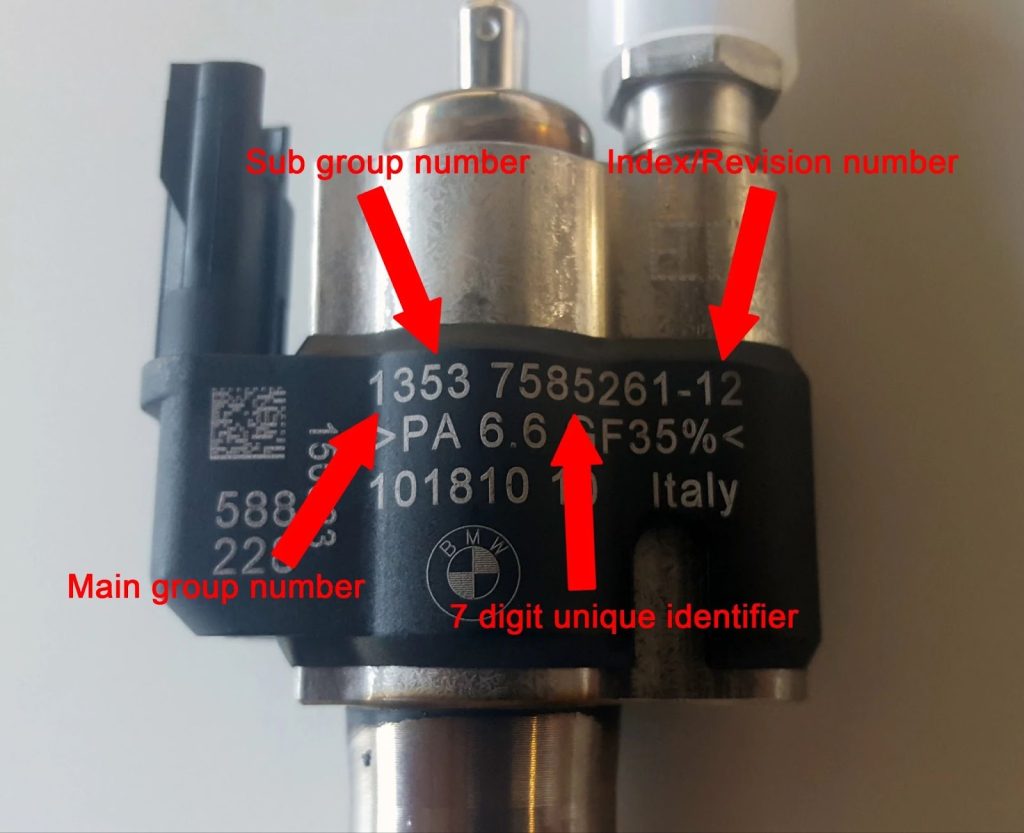Demystifying the BMW Part Number System
Share
Share

Understanding BMW part numbers doesn’t have to be a complex or stressful endeavour. Whether you’re well-versed in what these numbers signify or you’re simply aiming to find a specific part without delving into their meanings, the process is straightforward. For those who already have a specific BMW part number in mind and are seeking a replacement, utilising the search function on platforms like FCP Euro can effortlessly connect you with the exact part you need.
If the part number remains unknown, tools such as Bimmercat or Realoem come to the rescue, allowing you to explore extensive catalogues of BMW parts diagrams to pinpoint the right part along with its associated number. For enthusiasts interested in decoding the story behind these numbers, the insights below will provide a closer look.
At first glance, the 11-digit BMW part numbers might appear to be a random sequence, seemingly cobbled together to form a unique code for each component. However, beneath this initial complexity lies a structured approach far more logical than it first seems. The current system employed by BMW distils the essence of identification into just 7 digits, despite the full 11-digit display.
Remarkably, every BMW part carries a distinct 7-digit number that speaks volumes about its identity and purpose. Take, for instance, a common component across various BMW models: a fuel injector. Illustrated by the part number “13 53 7 585 261-12,” we can unravel its coding mystery:
This structured coding is consistent across all BMW, MINI, and Rolls Royce parts, simplifying the identification process significantly. For those familiar with the BMW TIS system of parts documentation, this pattern of Main Group numbers will be recognisably consistent, underscoring the methodical logic behind what might initially appear chaotic.
The main groups outlined above are also reflected in BMW’s WebETK (Electronic Parts Catalog), a valuable resource that can be freely accessed via BMW’s International Website. This platform allows for an intuitive browsing experience, systematically categorizing parts according to the aforementioned groups, thus streamlining the process of identifying and locating specific components.
Whether you’re a seasoned professional or a DIY enthusiast, the WebETK stands as an indispensable tool in the pursuit of genuine BMW parts, embodying both ease of use and comprehensive coverage.

Additionally, the main groupings play a vital role, not only in parts identification but also in navigating BMW’s technical database. This unified structure means that a solid grasp of the main group codes enables swift and accurate access to both parts and technical data related to any BMW, Mini, or Rolls-Royce vehicle.
Although the numbering might initially appear arbitrary, there’s a methodical logic underlying it. Upon closer examination, many find BMW’s part numbering system surprisingly intuitive and straightforward to decode, once they’re familiar with its intricacies.
Thankfully, BMW is renowned for maintaining a robust parts supply chain, catering even to the needs of vintage car enthusiasts. Navigating through the labyrinth of options and variants to find that precise component, however, can prove challenging. Key to demystifying this process is the correct part number, a tool that significantly streamlines online searches for those elusive rare parts, and expedites the ordering process at BMW dealerships.
A treasure trove of information awaits at RealOEM.com, an online catalogue teeming with detailed insights for BMW owners and enthusiasts. By simply inputting your vehicle’s VIN or browsing through models via the dropdown menu, you’re ushered into a comprehensive world of parts specifically tailored for your car.
The site intelligently organises parts across various categories, encouraging users to explore different sections if the desired component isn’t immediately apparent. Each category unveils detailed parts diagrams, enhancing the hunt for the right part. Although some diagrams may seem redundant or lack part numbers—attributable to the myriad options housed within newer vehicles—this feature underscores the depth of customisation BMW offers.
For convenience, parts are sometimes listed with USD prices, providing a general pricing guideline. It’s essential to note that availability may vary, as parts labelled as ‘Ended’ could still be sourced or have been re-manufactured by BMW following sufficient demand. Apart from aiding in parts identification, these diagrams serve as insightful references for understanding your vehicle’s assembly.
Nevertheless, given that some diagrams are generalised representations, a cautious approach is advised. For those parts adorned with a camera icon, a quick click reveals a photograph, offering a visual confirmation of the part in question. Delving further, selecting a part number or utilising the ‘Part Search’ feature reveals all models that incorporate the specified part, making it an invaluable resource when navigating the second-hand market.
Leave a Reply